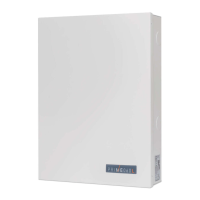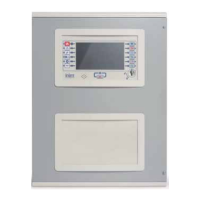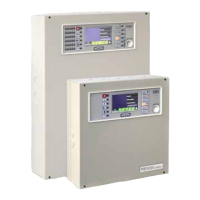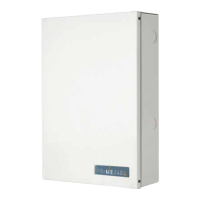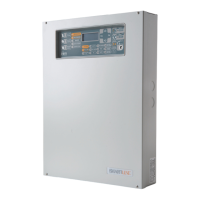44 Installation
Anti-intrusion control panels
3-5-4
Double-Zone balancing
Double zones without EOL resistor can discriminate 5 conditions on the entire terminal:
• stand-by on both zones
• alarm on zone 1 and standby on zone 2
• alarm on zone 2 and standby on zone 1
• alarm on both zones
• tamper (wire cutting)
For each of these, the control panel reads different resistance values on the terminal,
expressed below in Ohm.
3-5-5
Double Zone balancing with EOL
Double zones with EOL resistors can discriminate 6 conditions on the entire terminal:
• stand-by on both zones
• alarm on zone 1 and standby on zone 2
• alarm on zone 2 and standby on zone 1
• alarm on both zones
• tamper (wire cutting)
• tamper (short-circuit)
For each of these, the control panel reads different resistance values on the terminal,
expressed below in Ohm.
3-6
Wiring and balancing rollerblind/
shock sensors
It is possible to choose between two types of balancing for Rollerblind and Shock sensors:
• Normally closed (N.C.)
• Single balancing (NC with EOL)
The following table compares the protection level of rollerblind/shock sensors using the two
balancing options provided by the control panel.
If the rollerblind or shock sensor is connected to a terminal of a wireless device, the
connection cable must be less than 2 meters long.
The roller blind sensor must generate pulses with a length of between 500μsec and 10msec.
Ohm
Zone 1 Zone 2
(double)
> 3900 + 6800 tamper
3900 + 6800 alarm alarm
6800 standby alarm
3900 alarm standby
0 standby standby
Alarm
+12V GND
Tamper
Alarm
+12V GND
Tamper
3K9ƻ
Zone 1
Zone 2
6K8ƻ
Ohm
Zone 1 Zone 2
(double)
> 2 x 3900 + 6800 tamper (wire cutting)
> 2 x 3900 + 6800 alarm alarm
3900 + 6800 standby alarm
2 x 3900 alarm standby
3900 standby standby
0 tamper (short-circuit)
Alarm
+12V GND
Tamper
Alarm
+12V GND
Tamper
3K9ƻ
Zone 1
Zone 2
6K8ƻ
3K9ƻ
Table 3-7: Protection level
BALANCING N.C.
Single balancing
(N.C. with EOL)
Roller blind or Shock sensor
very low high

